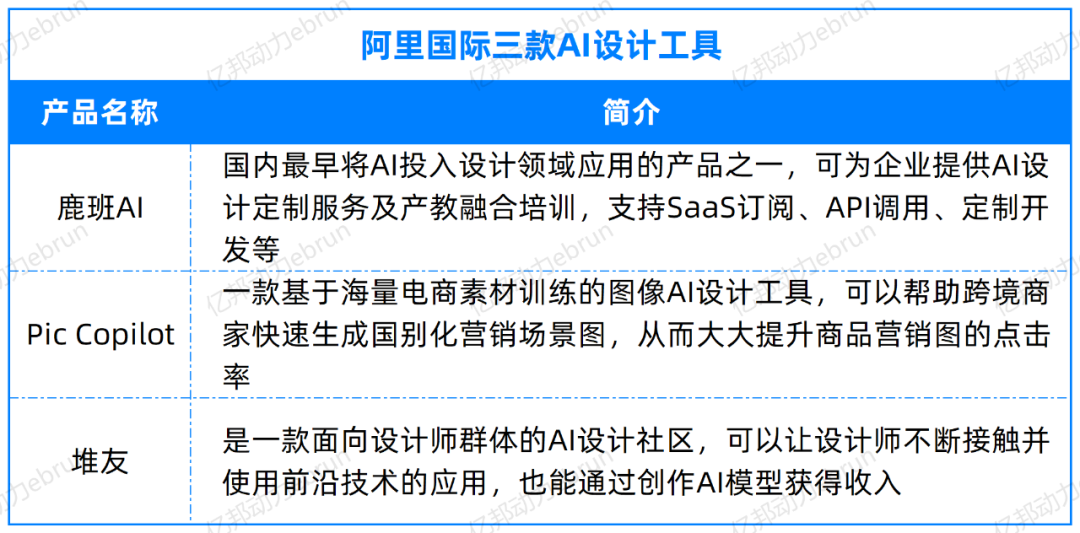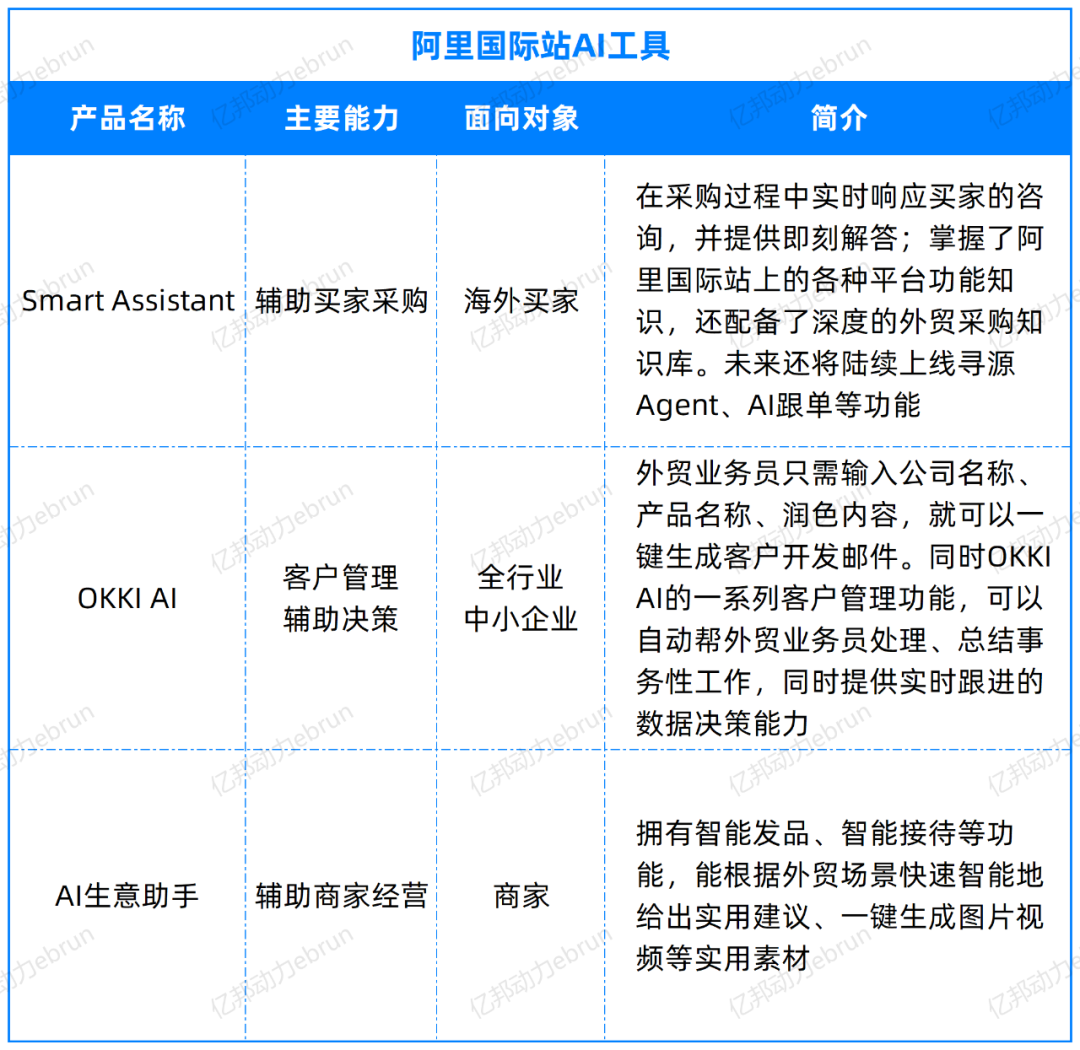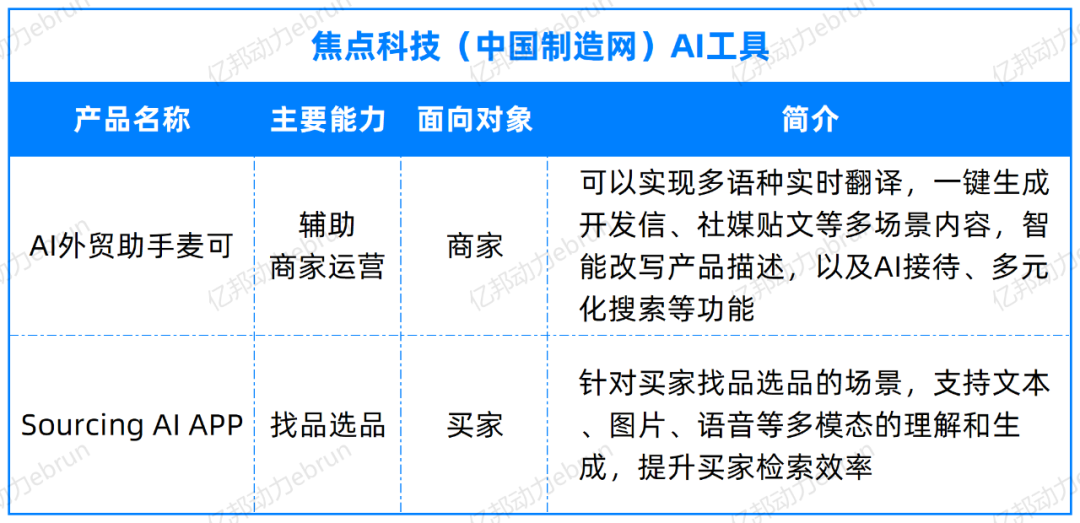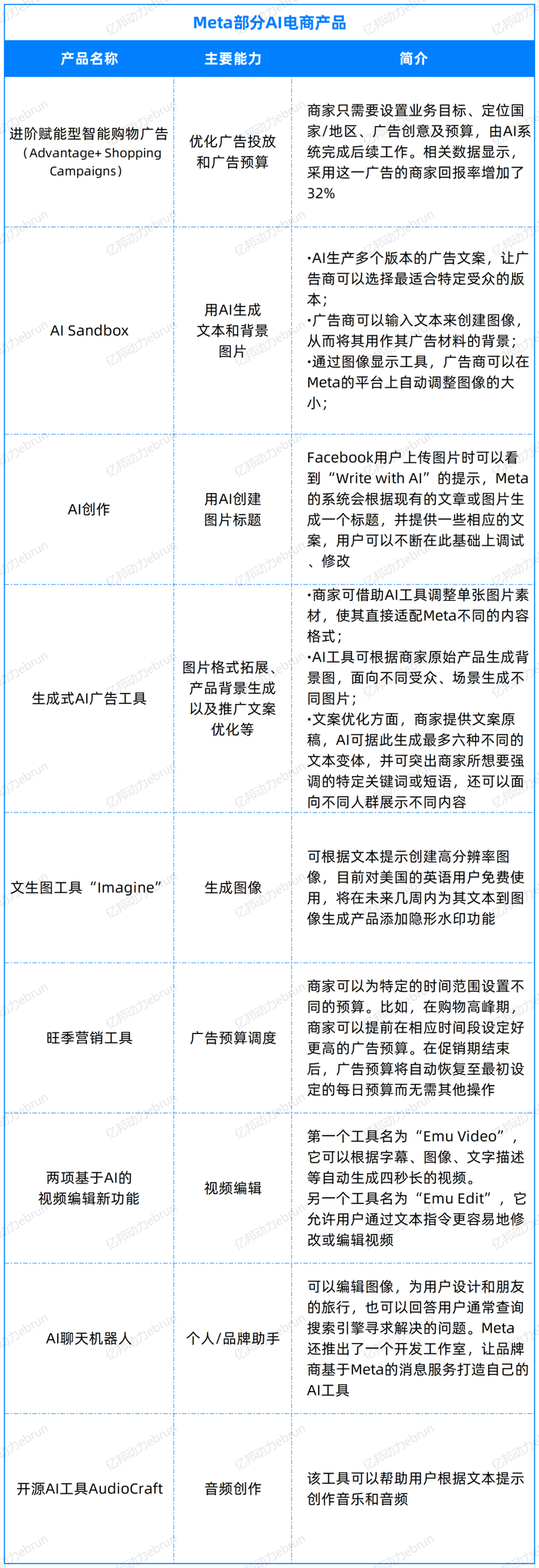Breaking news! Sora takes over TikTok! Gains over 100,000 followers! Sellers are feeling anxious, industry giants are sleepless for a night

By | Wang Haoran
Editor | He Yang
【Ebrun Original】Today, perhaps there is no longer any doubt about the correctness of the phrase "AI is the Fourth Industrial Revolution."
AI—this new thing, which is on the same level as the invention of the steam engine, electricity, and the computer, is sweeping the world by storm, affecting every aspect of commerce and people's lives.
The latest impact undoubtedly comes from Sora, the first large-scale video model released by the American artificial intelligence company OpenAI, which has shaken industries. Just when everyone is discussing what Sora will rewrite, another "bomb" exploded—OpenAI has quietly entered TikTok, updating numerous newly generated videos on the certified TikTok accounts, crazily attracting followers.
In just four days, without any promotion, the followers of OpenAI's TikTok account increased by over 100,000, with over 500,000 likes.
"The AI-generated videos and the human-made videos are mixed in the information flow, and you can't tell who is real or fake!" "How will human creators play in the future?" "No one expected that TikTok's content is actually providing training materials for Sora!"...Discussions are in full swing. While everyone is worried about short video creators having their jobs snatched by AI, they are also lamenting that even the platform has received a "reduced shock."
Staking a claim in the AI market has already become a sign of the opening of a new era for e-commerce platforms. The race of cross-border e-commerce provides a natural soil for the application of AI, such as the diversity of language and culture, which immediately provides AI with opportunities for application.
At the brink of the outbreak of AI in e-commerce, numerous AI applications emerge, including various cross-border service providers entering the scene. As a key player in the racetrack—platforms, their every move is connected with the livelihoods of millions of merchants. Exploring AI often most directly covers the largest number of sellers.
Looking at the exploration of AI by various cross-border e-commerce platforms, it is basically centered around three key factors: "people," "goods," and "scenarios," involving the three core directions: large-scale models, management tools, and marketing tools. Zhang Kaifei, the head of Alibaba International Business Group's cross-border business, once summarized the verified application achievements of AI in the e-commerce field in a podcast:
In the field of e-commerce marketing, use large-scale models to improve marketing efficiency and make advertisements more personalized;
Leverage the language understanding and generation capabilities based on large-scale models to address translation and localization issues for cross-border sellers in different countries;
The image and other content generation capabilities use the platform's AI to create content with a single click.
AI has quietly seeped into every part of merchants' operations: A Taobao merchant uses Alibaba AI to translate the communication needs of overseas customers on a daily basis; Amazon sellers are using the platform's AI tools to automatically generate listings and images; many emerging brands are also using Facebook's AI advertising tools to optimize ad placements and create ad materials...
At present, looking at the exploration of AI by cross-border e-commerce platforms, what benefits have been brought to merchants? To what extent can it revolutionize the three major elements of "people, goods, and scenarios" and bring about revolutionary changes to this industry? Based on this, Ebrun has enumerated the key applications of AI in the field of cross-border e-commerce platforms over the past year, providing an overview of the new value brought by the advancement of AI technology.
01
AI Shopping Guide Mix: Surrounding "User Experience"
For users, finding the products they want in the vast sea of shopping malls takes a lot of effort: whether the product meets their needs, how to choose different performance and attributes, how to find real reviews from the dazzling array of comments... Traditional simple search methods can no longer meet users' personalized and diverse shopping needs.
How to simplify consumers' selections, meet their personalized needs, and improve user stickiness has become one of the "battlegrounds" that every platform needs to conquer.
For sellers, this is also a new battlefield: under the new recommendation logic, how to get their products recommended by AI? A 24-hour intelligent customer service, is it able to generate more orders, or does it push sellers further away from consumers?
From cross-border retail to cross-border B2B, various platforms are applying AI technology to solve user experience problems, including shopping guidance and customer service.
▎Amazon: AI Summarizes Reviews, AI Shopping Assistant, Chatbot
In April 2023, Amazon CEO Andy Jassy announced in a shareholder letter that Amazon is heavily investing in large language models and generative AI, pointing out that this will be Amazon's core innovation in various businesses, in all fields, in the coming decades. He stated that large language models and generative AI will change and enhance virtually all user experiences.
Over the past year, Amazon has continuously improved users' shopping experiences and conversion rates by using AI technologies such as recommendation systems, voice assistants, and image search, and has launched a series of new products and services. For example, introducing Sponsored Brands Video in search results, Sponsored Display in shopping carts, and conducting Alexa Deals during Prime Day to help users more conveniently discover and purchase products they are interested in.
Among these, user reviews are the area where Amazon has been most frequently testing.
In August 2023, Amazon officially announced the launch of a generative AI-based product review summary feature. Summarizing reviews with AI can identify similar review themes and provide concise summaries on product detail pages, such as product features (such as performance, ease of use, stability, etc.) and buyer feelings.

According to Marketplace Pulse, Amazon has also been testing a generative AI tool in the form of an intelligent customer service tool, which prompts users to ask questions about specific products based on big data, summarized product reviews, and key information on listings. When users enter questions, the system will provide answers within seconds. It is important to note that its function is not really a conversational function, but is based on the existing features of the product.
In January 2024, Amazon announced that it is testing a generative AI shopping assistant called Rufus. This tool aims to help users search for and shop for products. When a shopper enters or says a question into the search bar of Amazon's mobile app, a chat window will appear at the bottom of the screen. Users can ask conversational questions such as "What are the differences between off-road running shoes and road running shoes?" or "Compare dripping coffee makers with manual coffee makers" and more.
In addition, Amazon has also launched a chatbot Q for enterprises and a generative artificial intelligence service Bedrock for cloud customers.
▎Shopify: Semantic precise search algorithm matching shopping content
In March 2023, Shopify announced a partnership with Google Cloud to launch Discovery AI service, providing businesses with Google's search capabilities and product recommendation services. The service mainly includes two functions:
Retail search. Google Cloud will provide Shopify merchants with better search results and query scope, and will expand search content to non-product searches and semantic searches to efficiently match product attributes and store content, allowing consumers to quickly discover the products they need;
AI algorithm recommendation. Google Cloud will integrate consumer shopping categories, consumer behavior patterns, such as clicks, adding to cart, payments, among a series of behaviors, to determine their consumption preferences, and provide personalized search and product recommendation services based on this.
Subsequently, Shopify also launched AI search feature Semantic Search, providing users with more accurate related search results. For example, when a user enters "What to wear when skiing", AI will automatically identify various results related to warm clothing, even if there is no precise keyword match, and will display related results based on intent.
▎TikTok: Navigation assistant guiding users to watch more video content
TikTok tested an in-app AI chatbot "Tako". When users click, they can ask Tako various questions about videos, or submit requests for recommendations of other video content. Users can also request Tako to recommend some specific themed videos, such as pets, food, etc. The bot will respond with a list of results, including video names, authors, and themes, as well as suggested video links. Users can click on the video thumbnail to jump to the content.
Different from the "shopping" assistants of the platforms mentioned above, "Tako" focuses more on "navigation": guiding users to watch more video content rather than directly bringing about conversions.
▎Alibaba.com: AI purchasing assistant + foreign trade procurement knowledge base
The Alibaba.com has launched AI purchasing assistant "Smart Assistant", which can provide real-time answers to buyer inquiries during the purchasing process. After extensive training, the AI purchasing assistant has not only mastered various platform functionalities on the Alibaba.com, but also equipped a deep foreign trade procurement knowledge base. The AI purchasing assistant will also gradually roll out sourcing agents, AI follow-up services, and more.
▎Lazada: Launches shopping assistant LazzieChat
Lazada is also exploring AI search products. In May 2023, Lazada introduced the AI chatbot LazzieChat in Southeast Asia, to answer consumer shopping queries and recommend products. LazzieChat can now intelligently respond to user queries, act as a personal shopping guide, and provide personalized suggestions and product recommendations. For sellers, the appearance of the chatbot LazzieChat is like a 24/7 official robot customer service.
▎OTTO: Reducing return rates with shopping assistant
Germany's largest e-commerce platform OTTO previously announced the testing of its latest AI assistant—OTTO AI. The purpose of the OTTO AI assistant is to better target audiences, improve customer satisfaction, and reduce return rates. It is claimed that the assistant can answer complex questions in seconds, help customers find the required product information more conveniently.
▎Wayfair: AI home designers
Wayfair launched a generative AI tool called Decorify, which lets users design their living spaces and home styles based on their style preferences—just by taking a picture of the living space, Decorify can complete the entire home style and recommend home products to the user.
Reportedly, Wayfair has achieved automated large-scale data tagging through SnorkelAI, providing users with more accurate search results. Users can describe their preferences based on specific details such as color, texture, shape, and more, and AI will help them quickly find relevant products. Based on product features, the large model will also help Wayfair make timely modifications and enrich the product catalog based on market trends.
▎Etsy: Using AI to recommend gifts
Etsy has introduced an AI gift recommendation feature called Gift Mode. Users are asked a series of questions, such as: Who is the gift for? What is the occasion? Then the AI filters out the best categories to select from. For example, Gift Mode recommends buying pet pajamas or custom pet portraits for pet owners. According to Etsy, the platform will continue to develop new features for Gift Mode and promote this new tool.
▎Made-in-China.com: Focusing on sourcing and product selection scenes to improve retrieval efficiency
It is reported that Made-in-China.com has previously launched the Sourcing AI application, which supports multi-modal understanding and generation of text, images, and voice for buyers engaged in sourcing and product selection scenes, improving buyers' retrieval efficiency.
▎Walmart: Datafying customer information, using virtual try-on to open up social e-commerce channels
At the new CES exhibition, Walmart CEO Doug McMillon had three core insights into AI:
Technology centered on people. As Walmart pursues technological progress, it prioritizes people rather than amplifying technology infinitely;
Sam's Club digitalizes customer information and behavioral data, reduces user waiting times with features such as scan and go, and improves efficiency;
Walmart's app continues to innovate, adding better search functionality, virtual try-ons, virtual furniture matching, and auto-replenishing of user's commonly used products based on daily usage. The latest feature "Shop with friends" allows users to try on clothing combinations on a virtual person and seek help from friends for recommendations when purchasing clothes.
▎Snapchat: Commercialize AIGC, reshape e-commerce shopping experiences with AR
AR is currently the focus of Snapchat. With the help of Snapchat AR filters, users can visually see the effect of various products, which can also bring better returns for brands. During last year's year-end shopping season, Amazon teamed up with Snap to create an AR shopping experience for thousands of products; they also launched AI image generation function Dreams, which allows users to generate images in different styles after uploading a few selfies.
In addition, Snapchat has also launched the AI chatbot My AI and is exploring commercialization. Since its launch, My AI has received more than 20 billion messages from 200 million users worldwide, making My AI one of the most widely used AI chatbots. Users can chat with My AI and seek shopping-related advice, covering beauty and health, clothing, electronics, pets, cars, and other categories.
Currently, Snapchat is testing My AI promotion links, allowing My AI to push related merchant promotion links while answering user questions, achieving more precise and effective promotion and marketing.
02
Operational Support
How much cost can be saved for merchants?
On the eve of Pinduoduo surpassing Alibaba in market value, Jack Ma made a rare internal voice: The AI e-commerce era has just begun, which is an opportunity and a challenge for everyone.
This is not a sudden impulse, but a crisis. In China, Pinduoduo has carved out a path in the sinking market through AI algorithms, highlighting the algorithmic logic of single products and the social viral nature of "group buying," completely opening up new horizons for users. Overseas, Temu has replicated Pinduoduo's growth path, based on the "full-service" model and viral social user growth, breaking the inherent pattern of shelf-based e-commerce.
Alibaba's exploration of AI is extremely resolute, which is also evident in the advancement of Alibaba's international business. For example, there are reports that Zhang Kaifei led the creation of an AI Business team, where model training personnel account for about one-third, and other personnel are responsible for model reasoning applications, infrastructure, and specific product development and operations. The algorithm team focuses on three directions: large-model training for multilingual e-commerce, conversational models, and downstream tasks, and image generation capabilities.
Currently, AI Business's AI services have been fully launched on AliExpress, Trendyol, Daraz, and other platforms, mainly including localized product information, image design, chatbots, and customer service translation scenarios.
This is another important battleground for AI exploration on cross-border e-commerce platforms—saving operational costs for merchants through AI and improving efficiency. In addition to Alibaba, platforms such as Amazon, Made-in-China.com, and Shopify are also continuously exploring in this area.
▎Alibaba: AI application covers all aspects of operations, jointly promoting B2B and B2C
In November 2023, based on the self-developed LLM model, the AI Business team officially released the AI product "Aidge," which includes a series of functions such as translation, marketing, localized content, and design. In addition to supporting various businesses of Alibaba International, it will also open interfaces to independent software service providers (ISVs) and SaaS service providers for them to develop products that better meet merchant needs.
In December, Alibaba International released three AI design tools, adapted to country-specific marketing scenarios, namely Lu Ban AI, Pic Copilot, and Dui You. These three products have functions such as AI painting, AI model creation, and AI image and video processing.

In July, Lazada internally launched AI marketing assistants and products for advertising ROI prediction for operations staff.
In the field of cross-border B2B, the application of AI is even more extensive on Alibaba.com. In addition to the AI procurement assistant, there are two other products: OKKI AI and AI Business Assistant.

▎Amazon: Use short keywords to generate content with one click
In September 2023, Amazon launched a self-generated listing feature. Sellers only need to provide a brief description of the product, a few keywords, or a few sentences, to get titles, five-point descriptions, and product descriptions automatically generated by AI, greatly simplifying the process of creating listings.
▎Made-in-China.com: AI assistants provide a series of functions such as marketing and replying to inquiries
As an established cross-border B2B platform, Made-in-China.com sees AI as one of its core strategies. In 2023, Made-in-China.com launched Mai, an AI assistant that integrates high-quality big data models and the platform's professional database. Michael AI assistant can help companies with marketing, product information quality maintenance and optimization, specific negotiations, writing development letters, replying to customer inquiries, and helping companies promote their brands on overseas social media.
"The most crucial point is that AI can also improve the baseline quality, and once the baseline quality of many things is improved, the industry will undergo major changes," said Li Lei, Senior Vice President of Focus Technology and President of Made-in-China.com, to Ebrun. "Just like daily running, if we run fast enough, in fact, there might be no need for a bike, and a new industry may be born. AI technology raises the baseline of the entire foreign trade, leading to qualitative changes. More and more domestic trade enterprises will participate, and the roar and overseas publicity of Made-in-China.com will become more pronounced and prominent, integrating more into the world economy."
"The development of AI can also be seen as the next industrial revolution of cross-border B2B."

▎Shopify: A large warehouse of AI operation tools
As a leading SaaS website builder, Shopify's tools are constantly updated, offering not only a range of self-launched tools, but also an open platform for developers and merchants to freely choose from, including countless AI tools. For example, a developer in Shopify's ecosystem launched the AI advertising product CreatorKit, which uses generative AI models to create ad images and videos for Shopify sellers. Founder Kevin Natanzon excitedly called it "the best practice for generative AI in the business world."
From their own perspective, Shopify has launched a new AI chatbot assistant called "Sidekick," designed to help merchants manage online stores and analyze financial performance. Sidekick combines Shopify's own platform data with artificial intelligence technology to provide sellers with the tools needed to expand their business, save time, and simplify operations.
In addition, Shopify has launched a Shopify Magic tool based on artificial intelligence technology. The tool generates content suggestions, such as product descriptions, email subject lines, and online store titles, based on the information provided by sellers, helping sellers improve their copywriting speed. According to the introduction, sellers only need to list a few keywords of the product, and Shopify Magic will quickly generate product descriptions or optimize the existing ones. At the same time, sellers can create personalized product descriptions suitable for their own brands by exploring different wording tones or adding special instructions.
In a subsequent update, Shopify Magic also introduced an AI real-time answering feature, similar to intelligent customer service. This feature generates personalized instant replies for the seller's store. When a customer clicks the chat button, a chat window will appear in the browser showing the seller's greetings and a visible list of instant replies. Sellers can create any number of instant replies according to their needs and display up to 100 questions and answers to customers. Customers can directly send messages or choose questions, and they can also click on "Track My Order" to automatically receive their order status.
According to TechCrunch, Shopify has also introduced new features for its Winter Edition, including an AI editor to improve product images, semantic search, and a better way to display different variants of products for merchants.
03
AI in e-commerce marketing
Integrating all aspects into one
After 2021, there has been a huge transformation in advertising investment flow, and businesses must break away from traditional advertising methods.
The emergence of AI is transforming the entire cross-border e-commerce chain. "Marketing," an important part of this chain, is also deeply impacted. For example, many sellers have started to apply AI for listing optimization, email writing, and advertising copywriting. However, these are just the last parts of the operation process. Marketing planning, advertising investment, and operation adjustments are the real challenges facing everyone.
In various platforms, Meta and TikTok are typical representatives using AI technology to transform e-commerce marketing and improve marketing effectiveness.
▎Meta: Using AI throughout the marketing chain to optimize automated advertising placement
In reference to AI marketing, Meta cannot be overlooked. As one of the giants in the global digital marketing market, Meta fully committed to AI in 2023, and the market's response has been quite surprising: not only has there been rapid growth for several consecutive quarters, but its market value has also returned to the trillion-dollar club.
In several quarters of earnings conference calls, Mark Zuckerberg always mentions the most critical factor: AI.
The greatest utility of AI for businesses is reflected in the improvement of advertising placements. The empowerment-type automated business tool series introduced by Meta helps advertisers wisely schedule their time and budget for Meta.
Especially the advanced empowerment-type intelligent shopping advertising (Advantage+ Shopping Campaigns) launched in August 2022, advertisers only need to set business goals, targeted countries/regions, advertise creativity, and budget, and then the AI system will complete the rest of the work. According to a test conducted by Meta, advertisers using advanced empowerment-type intelligent shopping ads achieved a 32% return on investment.
The advanced empowerment-type ad series consists of 12 products, using AI and machine learning to optimize ad effectiveness, personalize ad placements at the right time to the ideal audience, enable efficiency savings of time and money. The main solutions for the advanced empowerment series include:
Advanced empowerment-type intelligent shopping advertising (Advantage+ Shopping Campaigns) for direct sales advertisers in the e-commerce industry and retail industry, improves effectiveness through an end-to-end automated system for the ad creation process (including targeting, bidding, placements, and creativity);
Advanced empowerment-type app advertising (Advantage+ App Campaigns), which provides support for application promotion by displaying the most effective ad creativity on Facebook, Instagram, and the Meta Audience Network among the most relevant audience;
Advanced empowerment-type catalog advertising (Advantage+ Catalog Ads), which reaches premium customers through various ad creativity related to products and services.
Of course, even when the scope is limited to e-commerce-related businesses, Meta's AI tools are not limited to this alone; they also include AI ad graphic tools, peak season ad budget tools, and so on.
In the second quarter's earnings report last year, Mark Zuckerberg also stated that Meta will explore generative AI in three dimensions:
One type is various types of AI agents.
AI-driven creative functions. For example, in advertising, AI helps advertisers run ads, where advertisers essentially don't need to provide too much creativity, or if they have an image that isn't quite suitable, AI can fill in the gaps.
Internal productivity and efficiency. Help engineers to write code faster, help people understand the company's overall knowledge base, etc. There are many things to be done in each area.
"I think AI focuses on helping people build connections, promote connections in expression and creativity, and help creators cultivate their community," said Zuckerberg. "The fastest and most direct commercial cycle is to help people interact with businesses. You can imagine a world where every business has an AI agent, and people can send messages to interact with it over time."
This year, Meta continues to consider AI as one of its most core investment areas.
▎TikTok: Embedding AI recognition tools, connecting videos directly to stores
It is reported that TikTok is testing an AI tool for its e-commerce business TikTok Shop, which can identify products in short videos and suggest similar/related items to users.
For example, if a user shares a holiday celebration video wearing a specific outfit, this AI feature will provide options to "find more wedding dresses on the TikTok shop" on other users' "For You" subscription pages. The video will display an "Shop Now" button, leading to the "Shop" tab of the app, drawing traffic to the store's homepage, not just specific wedding items.
However, this AI tool is still in the testing phase, only being released to a small group of users in the United States and the United Kingdom and has not been formally launched.
TikTok is not the only platform that adopts such functionalities. Other social media platforms such as YouTube and Instagram also provide product tags in images and videos, for example, Facebook Shop and Instagram Shop.
Although major platforms have various applications of AI, many have already begun to enter the practical application stage, but as it stands now, the response from the merchant side is relatively lagging behind—discussions on business models and platform policies can be found in any merchant group, but it’s difficult to come across their discussion of AI topics in chat records.
For the current cross-border track, the "full hosting" battle is being staged, while the competition of the AI e-commerce era is still buried under the iceberg.
Rogers’ "Innovation Diffusion Theory" points out: "The diffusion of innovation always starts relatively slowly. Then, when a certain number of users are reached, the diffusion process suddenly accelerates. This process continues until the majority of potential innovators in the system have adopted the innovation, reaching the saturation point, and the diffusion speed gradually slows down. The number of innovators follows an S-shaped change trajectory over time."
Perhaps, the penetration of AI in cross-border e-commerce is at the lower end of this curve—waiting for a critical node for explosive penetration.
[Copyright Notice] Ebrun advocates respecting and protecting intellectual property rights. Without permission, no one is allowed to copy, reproduce, or use the content of this website in any other way. If any copyright issues are found in the articles on this website, please provide copyright questions, identification, proof of copyright, contact information, etc. and send an email to run@ebrun.com. We will communicate and handle it in a timely manner.

